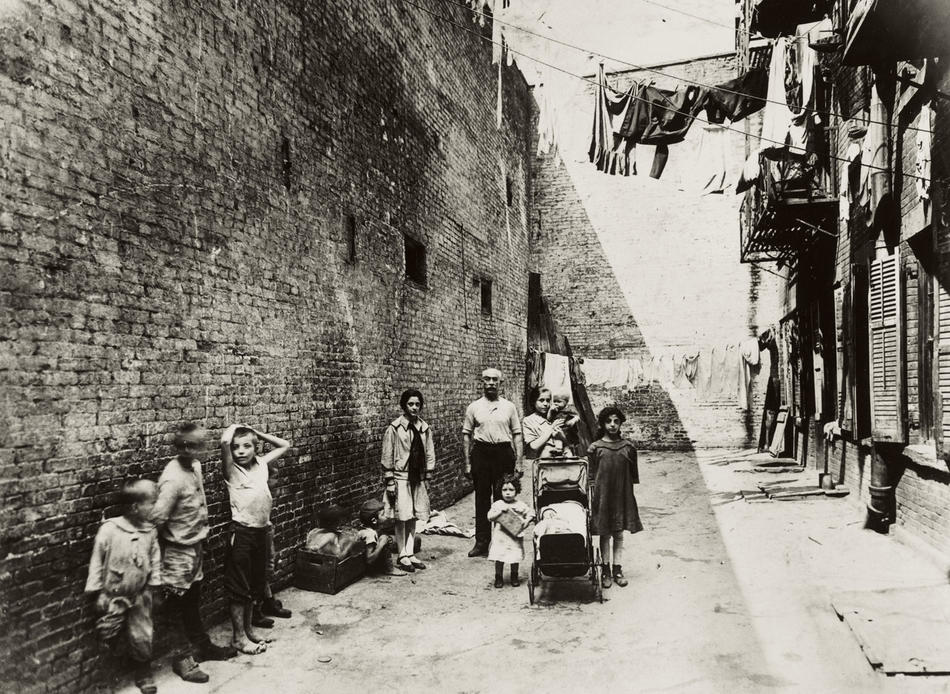If all art is propaganda, as George Orwell, Upton Sinclair, and W. E. B. Du Bois each observed, the emerging practice of street photography in the late 19th century signaled a revolution — the most potent means yet for promoting a social agenda.
A hundred years ago, New York’s major benevolence agencies, the New York City Charity Organization Society (COS) and the New York Association for Improving the Condition of the Poor (AICP), capitalized on that potential. In their rival campaigns to understand and address the social ills of urbanization during the late 19th and early 20th centuries, they used photography to reach the emotions of New York’s donor classes. Pictures of ragged children and sprawling families in cramped quarters were a good bet.
In an exhibition at the Miriam and Ira D. Wallach Art Gallery, Social Forces Visualized: Photography and Scientific Charity during the Progressive Era, curated by art history PhD candidates Drew Sawyer ’08GSAS and Huffa Frobes-Cross, images of New York’s immigrant poor by photographers like Jacob Riis, Lewis Hine, and Jessie Tarbox Beals are paired with maps, charts, models, and brochures to give a sense of the marketing and education strategies of scientific charity groups.
Above, we see a photograph by Beals showing a family in a tenement air shaft. The commissioned image appeared in Bagdad on the Subway, a newsletter on urban poverty published by the AICP from 1917 to 1919. The photo essay was titled “Little Prisoners of the Slums.”
“This is just speculation,” says Sawyer, “but it’s possible that Beals brought the three children on the left into the photograph to make the family seem larger. A bigger family would appear needier than a smaller one.”
In another dozen years, both the AICP and the COS felt the pinch from the growing role of government in delivering services to the poor. Finally, in 1939, the organizations merged to form the Community Service Society (CSS), which still operates today.
The Wallach exhibit, on view through December 17, draws heavily from CSS materials held at the Rare Book & Manuscript Library. The CSS began donating its records in the 1970s to Columbia — an apt choice, given the genealogy: In 1898, the COS announced a summer course in the New York Times, an initiative that grew into the New York School of Social Work, which in 1940 became affiliated with Columbia. By the early 1960s, the school joined the University and was renamed the Columbia University School of Social Work.
In assembling those early records, Sawyer and Frobes-Cross not only offer an institutional and social history, but mark the rise of documentary photography and, in the process, show us a different way of seeing.
“The exhibit provides an opportunity to reinterpret images that have been stripped of their context,” says Sawyer. “When we look at these photos in a museum, we don’t normally see the journals or newsletters in which they appeared. Our purpose goes against a purely aesthetic interpretation."



